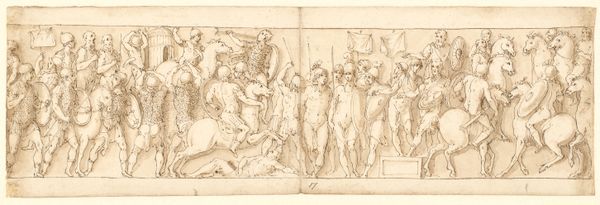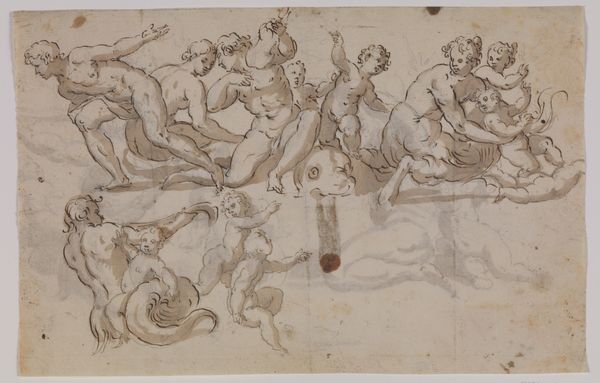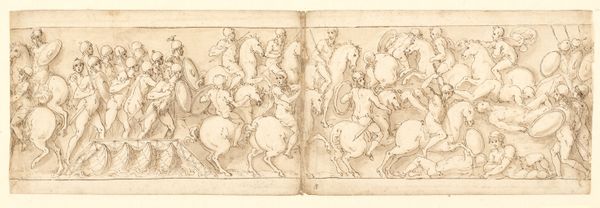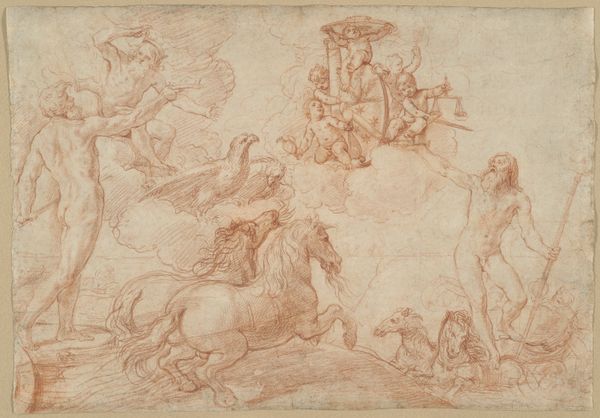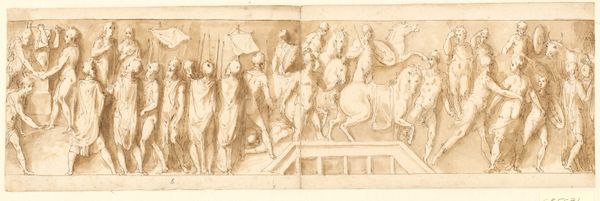
Three sedan chairs (end of XLII); the Romans attack a chief’s dwelling (XLIII); the Romans marching back to camp (XLIV) 1544 - 1618
0:00
0:00
drawing, pen
#
drawing
#
narrative-art
#
etching
#
11_renaissance
#
pen
#
history-painting
#
academic-art
Dimensions: 133 mm (height) x 432 mm (width) (bladmaal)
Editor: This drawing by Giovanni Guerra, from somewhere between 1544 and 1618, uses pen and ink to depict a sequence of Roman encounters – sedan chairs, an attack, and a retreat. I’m really struck by the frieze-like composition, almost like a classical relief. What stands out to you when you look at this piece? Curator: What interests me here is the production of the image itself, its means. It’s pen and ink on paper, yes, but look at the labor involved in creating this illusion of depth and movement, all those tiny, repetitive strokes. It speaks to the commodification of classical ideals, doesn't it? Think of the paper as a raw material transformed through skilled, meticulous labor. Editor: So, less about the Roman narrative and more about…the drawing as a produced object? Curator: Exactly. Consider how this drawing might have been circulated. Was it intended as a study, a template for a print, or even something else? The means of reproduction dictate its function and audience. Were there workshops or an economy that this circulated in? Also, does the act of documenting and portraying Roman power legitimize or question its inherent violence? The paper becomes a battleground of sorts. Editor: That's fascinating. It reframes the entire drawing – makes me wonder about who had access to the materials and skills to create images like these and what kind of world view that imposed. Curator: Precisely. How was the availability of materials shaped by social and economic forces? These choices also shape the visual argument. Let's keep questioning what work goes into a work of art and the world that shaped its creation.
Comments
No comments
Be the first to comment and join the conversation on the ultimate creative platform.






